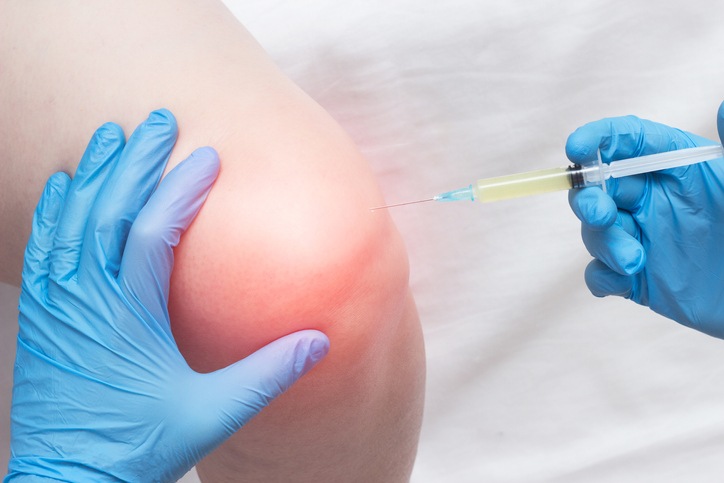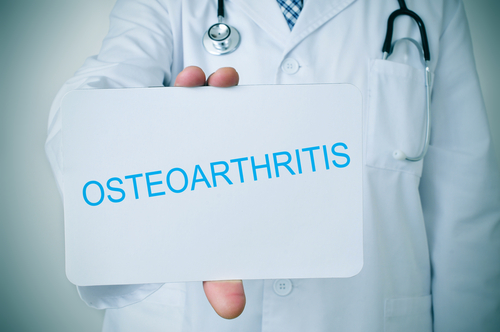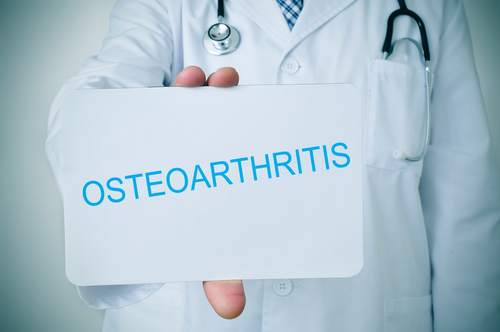
A new study compared the efficacy of intra-articular hypertonic dextrose prolotherapy (DPT) versus normal saline injection for osteoarthritis (OA) of the knee.
Knee OA can leave patients with pain and disability, as well as lead to substantial costs for not only the patient but for society. There are limited options for conservative care, such as exercising and losing weight, but the disease’s degenerative nature and the challenge of behavioral changes put patients at a disadvantage. Nonsteroidal anti-inflammatory drugs have known benefits but carry significant risks. Intra-articular corticosteroid and hyaluronic acid may provide short-term relief but also have risks. Total knee replacement is expensive and brings with it the risks associated with surgery. Less risky options like physical therapy, acupuncture, and herbal treatments have mixed results. Because of this, the researchers pointed to a significant need to identify a safe and effective nonoperative treatment option.
“Prolotherapy is an injection therapy used to treat chronic painful musculoskeletal conditions, including [knee] OA,” the study authors said. While various injectants have been used, hypertonic dextrose has been used since the 1950s, is the most common injection used, and is the most studied. Hypertonic dextrose prolotherapy (DPT) has historically been understood to facilitate healing and subsequent pain control through tissue proliferation potentially mediated by an inflammatory mechanism.”
The present trial took place at a university primary care clinic in Hong Kong and randomized 76 knee OA patients 1:1 to DPT or normal saline for injections at weeks zero, four, eight, and 16. The main outcome was the Western Ontario McMaster University Osteoarthritis Index (WOMAC) pain score. Other outcomes included the WOMAC composite, function, and stiffness scores; objectively assessed physical function test results; visual analog scale (VAS) score for knee pain; and EuroQol-5D score.
Intra-articular Hypertonic Dextrose Prolotherapy Comes Out on Top
At 52 weeks, the WOMAC pain score had an estimated –10.34-point difference-in-difference (95% confidence interval [CI], –19.20 to –1.49; P=0.022); the difference-in-difference estimate presented a similarly favorable outcome in WOMAC function score (–9.55; 95% CI, –17.72 to –1.39; P=0.022), WOMAC composite score (–9.65; 95% CI, –17.77 to –1.53; P=0.020), VAS pain intensity score (–10.98; 95% CI, –21.36 to –0.61; P=0.038), and EuroQol-5D VAS score (8.64; 95% CI, 1.36 to 5.92; P=0.020). There were no reported AEs.
The authors, whose study was published in Annals of Family Medicine, concluded, “The outcomes associated with the current abbreviated protocol compares well with those of the more complex standard protocol. The single intra-articular injection is easy to learn, is part of conventional medical training, and is quick and inexpensive. While longer-term follow-up, direct comparison with other injection therapies, cost-effective analysis, and a better understanding of mechanism are needed, the current study suggests that intra-articular DPT may be appropriate care for patients with [knee] OA refractory to more conservative care.”







 © 2025 Mashup Media, LLC, a Formedics Property. All Rights Reserved.
© 2025 Mashup Media, LLC, a Formedics Property. All Rights Reserved.